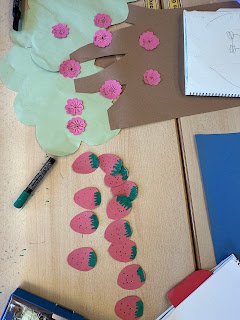Family Tree
The preschoolers have been busily working on their Family Tree as they continue to inquire about their personal histories.
Researching and finding out more about your family's history helps the young learners establish their identity, embrace their cultures and traditions and understand who they are.
They learn about the past and feel a great connection to them as they gain knowledge about them.
It was also interesting to hear them identify their relatives from both sides of parents. They are starting to know these people by name which hopefully could lead to deeper curiosity and search for knowledge about them.
To add a little artistic touch into their presentations, the students were challenged to present the Family Tree not just only as a tree, but rather in a more creative and unique way!
See the great ideas they were able to come up with for their presentations.
"Sea my Family"
Some students chose to present the members as fishes in an aquarium.
Who would have come up with an idea of an underwater adventure with the family of octopuses?
"Strawberry Fields".
...and beautiful sakura tree!
"Stars in Space"
To share the passion for space and stars.
"Nakamura Race"

Next week, they will be able to not just only identify the relatives but be able to visually see and understand the flow of the relationship.
A family tree can be a source of great pride and can bring out the sense of belonging. It keeps the family tradition alive, bring the stories of the past relatives come to life and could be a great storage of knowledge.
Talking to the children about the family histories not only benefit them but we also will be able to learn about it. We can also take information that help us understand and know more about ourselves and who we are.







Comments
Post a Comment